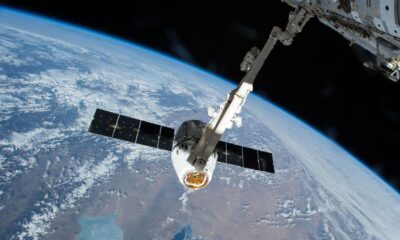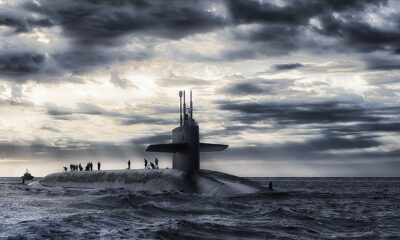Europe
German industry turns to arms sector
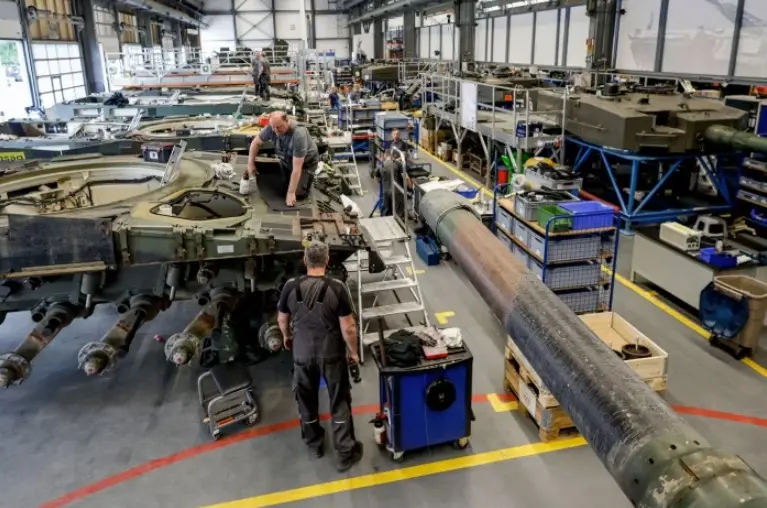
In the wake of the war in Ukraine, a growing number of German companies are moving into the military equipment and services sector, breaking a widespread taboo against supplying the arms industry.
The Financial Times (FT) reports a surge in production and investment in military equipment and services. Engine maker Deutz, for example, saw its shares rise by more than 20 per cent last week after announcing plans to produce tank engines as well as motorcycles.
The engineering group is among the medium-sized companies, the backbone of the German economy, that have reconsidered or ended the ban on defence contracts.
Due to the legacy of industrial cooperation with the Nazi regime, parts of German business have long shunned the defence sector. Since February 2022, however, some key players in the country’s engineering supply chain, such as laser manufacturer Trumpf and components company Hawe Hydraulik, have targeted military contracts.
“Defence of freedom by military means if necessary…”
Cathryn Clüver Ashbrook, a political scientist and former director of the German Council on Foreign Relations, told the FT that long-held attitudes to the defence sector were changing rapidly. “After three years of war and heavy economic losses on the European continent, Germany is on the verge of a historic change,” she said.
“Russia’s war of aggression against Ukraine has certainly raised awareness in our society that freedom must be defended by military means if necessary,” said Daimler, which last month announced a new contract to supply 1,500 trucks to the Canadian military.
War industry no longer “stigmatised”
Karl Haeusgen, chairman of engineering firm Hawe Hydraulik, which will end its ban on defence contracts in 2022, said the Ukraine war and subsequent European pressure to increase military spending had reduced the “stigma” surrounding the defence sector.
“A large part of the defence supply chain has a completely different image than three or four years ago,” Haeusgen said.
The company used to have a policy of not supplying the defence sector, but now its board-level committee considers orders for its valves and pumps, which can be used in military equipment, including vehicles and ships.
“Civilian” production harmonised with military production
This shift also comes at a time when German industry is struggling to recover from weak demand from China. In contrast to the booming defence sector, the country’s car industry has been forced to announce large-scale redundancies at a time when the transition to electric vehicles is proving difficult.
Christian Mölling of the German Council on Foreign Relations argued that Germany is facing the opposite situation to Europe in the immediate post-Cold War period, when companies were faced with the need to convert military production to civilian production.
“They are rethinking how to use [civilian] production capacity, technology and procedures to be more efficient in the military world,” Mölling said.
Work shifts from automotive to defence
Continental, one of the world’s leading automotive suppliers with 200,000 employees, recently launched a plan to transfer hundreds of workers to the German defence company Rheinmetall.
Peter Sebastian Krause, a Rheinmetall executive, said at the time that the Continental workers would bring “extremely valuable” skills to the company.
Laser manufacturer Trumpf, whose customers include the semiconductor industry, including chip-making equipment company ASML, is another company considering lifting the ban on defence supplies.
The company’s lasers are subject to export restrictions, including to China, because the German government considers them to be “dual-use”, with both civilian and military applications.
Hagen Zimer, the company’s head of laser operations, said defence companies had shown interest in military applications for the company’s lasers, such as shooting down drones. The laser could be a powerful defence tool, Zimer told the FT, adding that without the technology “it would be impossible to defend against a multi-pronged attack of 200 drones in war zones”.
Lufthansa enters the military industry
Lufthansa Technik, a wholly-owned subsidiary of the airline group that services around one-fifth of the world’s active fleet, officially launched a military aircraft services division last year. The unit, which has become a fast-growing business, will help maintain Germany’s Chinook helicopters and F-35 fighter jets.
“Based on our relationship with the German government, we decided to take a bigger step into defence in 2019,” said Lufthansa Technik chief executive Michael von Puttkamer, adding that the €100bn earmarked for military restructuring “is an opportunity to step further into the sector”.
“We believe that entering the defence sector is not only a great business opportunity, but also a way to support the ability of our German armed forces to defend our country,” Puttkamer said.
Susanne Wiegand, CEO of tank parts manufacturer Renk, said increased “synergies” between Germany’s civil and defence manufacturing sectors could benefit both sides.
“This is a great way to develop technology. Innovations come from the military world and find their way into civil applications and vice versa,” Wiegand said.
Europe
European gas prices rise amid fears of an escalating Middle East conflict
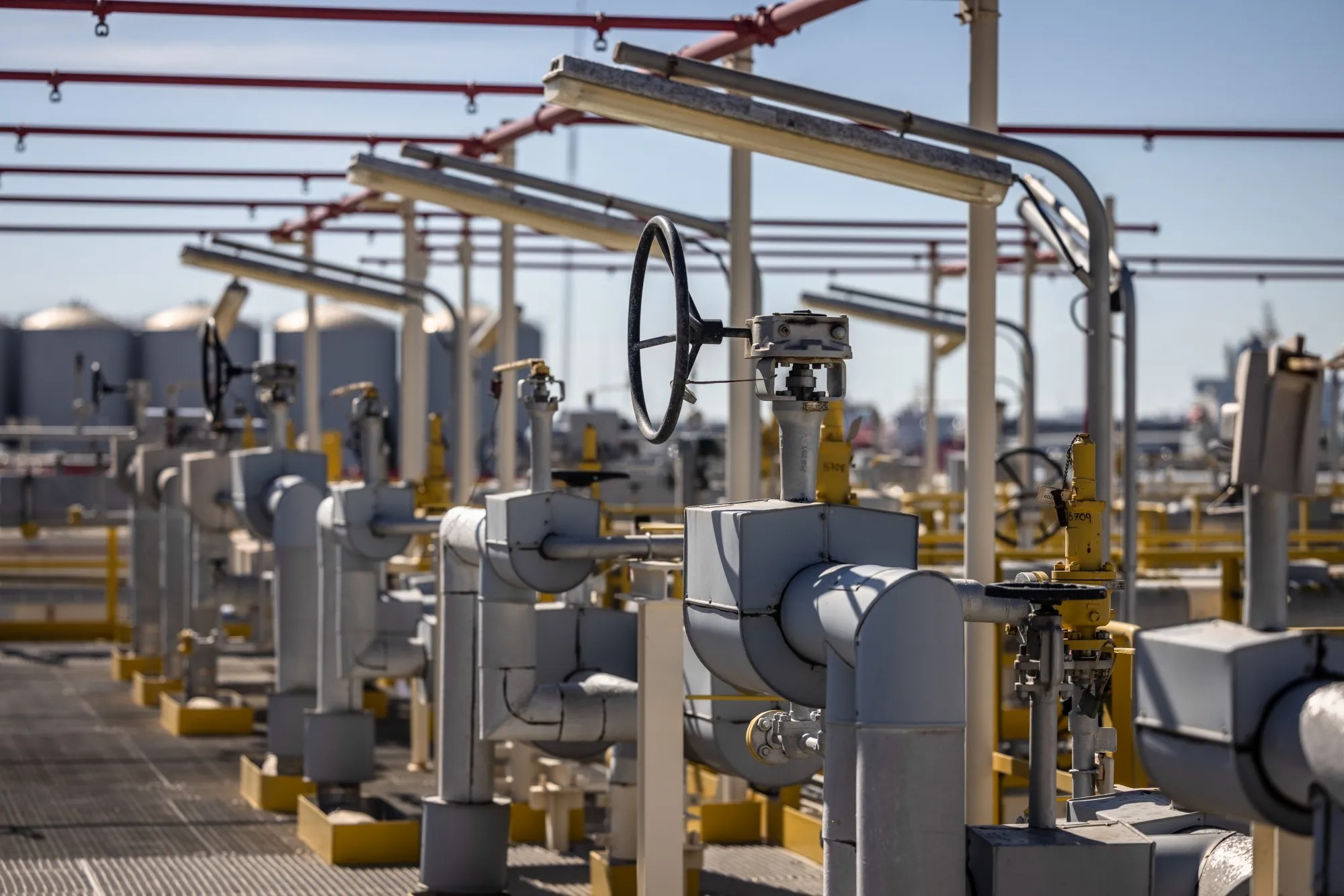
European natural gas prices have risen as traders prepare for the possibility of an escalating Israel-Iran conflict and the associated risks to global energy supply.
According to a report from Bloomberg, benchmark futures, which followed a volatile course in the previous session, increased by as much as 1.8%. US President Donald Trump demanded the evacuation of Tehran and later said that his early departure from the G7 summit in Canada had “nothing to do” with ceasefire efforts between Israel and Iran.
Although Europe appears to be in a good position regarding supply for now, its heavy dependence on the global flow of liquefied natural gas (LNG) makes prices susceptible to sharp movements if geopolitical developments pose a risk to international energy trade. The continent will need more fuel in the coming months to replenish its natural gas storage, which fell to a three-year low this winter.
The most significant threat comes from the possibility that Iran could close the Strait of Hormuz if the war escalates, thereby blocking shipments from Qatar, the largest LNG exporter. As the strait is also a vital route for oil shipments from the region, traders are closely monitoring tanker movements.
According to Goldman Sachs analysts Samantha Dart and Frederik Witzemann, the impact of the conflict on international gas markets has been limited so far. Modest imports by China have made more fuel available for other buyers, such as Egypt, which rushed to find alternative suppliers after Israel cut off its flows.
Additionally, traders are following the European Union’s plans to phase out its dependence on Russian pipeline gas and LNG supplies by the end of 2027. This supply currently accounts for about 13% of the region’s imports. On Tuesday, the European Commission will announce its detailed proposals regarding the ban on these flows.
The Dutch front-month futures, Europe’s benchmark natural gas price, rose by 0.6% to €38.12 per megawatt-hour at 8:52 AM in Amsterdam.
Europe
Germany holds first national veterans’ day since World War II

On Sunday, June 15, Germany held its first celebration for military veterans since the Second World War.
Defense Minister Boris Pistorius joined current and former soldiers and members of the public for events across the country, including a “veterans’ village” constructed in front of the Reichstag building in Berlin.
This marks a historic shift in a country where anything that could be seen as a “display of militarism” has been considered taboo for decades.
The new commemoration, established by a parliamentary resolution passed last year, is designed to “express gratitude, appreciation, and respect” for the Bundeswehr, Germany’s federal army.
The German Bundestag emphasized that the day also aims to deepen the bond between the military and the German people. At the ceremony in Berlin, Bundestag President Julia Klöckner of the CDU described the Bundeswehr as a “parliamentary army,” stating that this places a special responsibility on lawmakers.
She also acknowledged the demanding and often stressful nature of military service, stressing the need to provide soldiers with appropriate support.
Chancellor Friedrich Merz also stated on the social media platform X, “The Bundeswehr is an integral part of our society,” adding that those who serve or have served in the military deserve widespread appreciation, respect, and recognition.
“There won’t be tanks and fighter jets. We’re not there yet. But we are taking a really good first step,” Lieutenant Colonel Michael Krause, head of the newly established national veterans’ office, told the Financial Times (FT), comparing it to major military events in other countries.
Germany is channeling money and resources into its armed forces in response to NATO’s concerns about “Russian aggression.” The new chancellor, Friedrich Merz, has pledged to make Germany’s military the “strongest conventional army in Europe.”
Sarah Brockmeier-Large from the Peace Research Institute Frankfurt said that the fact politicians finally agreed to hold a veterans’ day is “a symbol of a growing appreciation in German society that we need functioning armed forces and that soldiers provide a vital public service.”
Berlin’s role in two world wars created a deep-seated skepticism toward military power after 1945, particularly in West Germany, leading to the emergence of a strong pacifist movement.
For decades, the term “veteran” was mostly associated with those who fought in Adolf Hitler’s Wehrmacht, not with those who served in the Bundeswehr, which was founded in 1955 and placed under strict parliamentary control.
“We couldn’t be proud of our old wars. That’s why in the 50s, 60s, and 70s, there was no veteran culture in the German Bundeswehr,” said Patrick Sensburg, president of the German reservists’ association.
During the Cold War, when Germany was divided, the Bundeswehr only participated in operations outside NATO territory to assist with natural disasters.
After “reunification” in 1990, the National People’s Army of the German Democratic Republic was disbanded, and a small number of its soldiers joined the Bundeswehr.
The newly unified army soon began participating in combat operations abroad. German warplanes helped bomb the former Yugoslavia during the NATO-led Kosovo mission in 1999.
But the most significant event for the veterans’ movement was the participation of 93,000 German soldiers in the US-led war in Afghanistan over nearly 20 years. Initially declared a German peacekeeping mission, it evolved into a combat operation as Bundeswehr troops fought the Taliban.
A total of 59 German soldiers were killed in the conflict, which also claimed the lives of about 3,000 American and allied soldiers and more than 100,000 Afghan civilians.
Those who served in Afghanistan, including many who returned home with physical and psychological wounds, initiated a grassroots movement to establish a veterans’ day, inspired by events like Anzac Day in Australia and New Zealand, Armed Forces Day in Great Britain, or Veterans Day in the US.
In 2012, an attempt by then-defense minister Thomas de Maizière to introduce the idea failed due to widespread political opposition.
“I think it was too early,” said military historian Sönke Neitzel, noting that at the time, Germany’s combat operations in Afghanistan were still seen as something that “should never have happened.”
But the pressure from former soldiers and the associations established to care for them continued.
Last year, German lawmakers approved a new plan to celebrate veterans “publicly and visibly” every year on June 15. Defense Minister Pistorius called it a “strong, important, and, yes, overdue sign of appreciation and gratitude.”
There is still opposition to the idea. Die Linke (The Left Party), which received 9% of the vote in the February parliamentary elections, organized an event in Berlin on Sunday titled, “We will not celebrate your wars.”
The party argued that the new veterans’ day was designed to “make war acceptable” and create “cannon fodder” for the German armed forces, at a time when military leaders are warning they need to recruit tens of thousands of additional soldiers in the coming years.
In the eastern states, formerly part of the German Democratic Republic, there is widespread opposition to Germany being one of Ukraine’s largest arms suppliers, partly due to the region’s historical ties with Russia.
But Katja Hoyer, a historian and author of the book Beyond the Wall: East Germany 1949-1990, argued that East Germans, who are disproportionately represented in the lower ranks of the Bundeswehr, still show broad support for the military and those who have served in it.
“The idea of rearming and strengthening the Bundeswehr is not a problem for many East Germans. There is a difference between the attitude towards the military in general and the attitude towards this conflict [in Ukraine],” she said.
The establishment of an annual event has been welcomed by veterans, although some remain cautious.
Thorsten Gärtner, a senior sergeant in the Bundeswehr who served five tours in Afghanistan and suffers from post-traumatic stress disorder, said he still does not always feel comfortable wearing his uniform on public transport in Berlin.
“I hope that one day it will be like in other countries, like the US, with an ID card for veterans and a 10% discount everywhere. I doubt that will happen. It’s not yet accepted. It will take a very long time,” Gärtner said.
Meanwhile, Prince Harry of the United Kingdom also released a video message in German to commemorate Germany’s first Veterans’ Day.
In his message, the Duke of Sussex wore various ceremonial medals, including the Afghanistan Campaign Medal, the Golden Jubilee Medal, the Diamond Jubilee Medal, and the Platinum Jubilee Medal.
Beginning his message in fluent German, the prince greeted viewers with “Guten Tag Deutschland” (Good Day Germany) before switching to English.
Prince Harry claimed it was a “great honor” to be tasked with delivering a message to the Germans on their inaugural Veterans’ Day. He said, “The warmth, enthusiasm, and unwavering support shown by the German people to our global community of wounded soldiers was truly impressive. You have certainly delivered on your promise to create a home of respect.”
Prince Harry praised the strength and resilience of veterans, describing them as “living testaments to resilience and moral courage.”
“Today, let us together renew our commitment to serve one another, to protect the freedoms that define who we are, for the enduring promise of peace, dignity, and democracy,” he added.
Europe
A state dedicated to Israel: Germany

In the escalating conflict following Israel’s attack on Iran, Germany stands out as the European nation providing the most substantial and unconditional support to Tel Aviv.
While the federal government approves of Israel’s actions against Iran and does not criticize the killing of civilian scientists, it objects to Iran’s retaliatory measures.
Friedrich Merz, leader of the Christian Democratic Union, commented on the attack against Iran on Friday, stating, “We affirm Israel’s right to defend its existence and the security of its citizens.”
Merz also announced that his government is preparing for “possible attacks by Iran against Israeli and Jewish targets.” In a statement before heading to the G7 summit in Canada on Sunday, he said, “Tehran must immediately stop the bombardment of civilian targets in Israel.”
Israel’s Embassy in Berlin has been closed indefinitely since Friday. The federal government has also increased security for Jewish institutions.
Merz stated on Friday that security officials were taking the necessary precautions.
He also reiterated Germany’s position that Iran should not develop or possess nuclear weapons. “This would pose a threat to Israel, the Middle East, and the entire international community,” Merz claimed.
Arguing that Iran’s nuclear program constitutes an “existential threat to the state of Israel,” Merz defended the country’s “right to defend its existence and the security of its citizens,” calling it “Israel’s legitimate right.”
Merz had also previously guaranteed that his government would not touch Prime Minister Benjamin Netanyahu, despite an arrest warrant issued by the International Criminal Court (ICC).
Before formally becoming chancellor, Friedrich Merz had said, “I promised that we would find the ways and means for Netanyahu to visit Germany and leave again without being arrested if he plans to do so.”
Foreign Minister Johann Wadephul echoed these sentiments on Friday, stating that Berlin would “stand in solidarity with Israel.”
Wadephul also announced that Germany, France, and the United Kingdom are prepared to hold urgent talks with Iran regarding its nuclear program to de-escalate tensions in the Middle East.
The German minister, who is currently holding talks in the Middle East and will visit Egypt, Lebanon, Jordan, Oman, and Israel, stated he is trying to contribute to reducing tensions between Israel and Iran. He alleged that Tehran had previously missed opportunities for constructive dialogue.
In an interview with the German public broadcaster ARD late on Saturday (June 14), Wadephul said, “I hope this is still possible. Germany, France, and the UK are ready. We are offering Iran urgent negotiations on the nuclear program, and I hope the offer is accepted. This is also a crucial precondition for de-escalating this conflict so that Iran poses no danger to the region, the state of Israel, or Europe.”
Speaking from Oman on Sunday, Wadephul argued that the conflict could only end if all parties applied pressure on both Iran and Israel.
“There is a shared expectation that both sides must make a serious attempt to stop the cycle of violence in the coming week,” the minister said.
When asked if he believed the Iranian government could fall, Wadephul stated that he did not think Israel intended to overthrow the regime in Tehran.
Touching on Gaza, Wadephul called the humanitarian situation in Palestine “unacceptable” and urged Israel to grant unrestricted access to aid organizations.
“The hunger, death, and suffering of the people in Gaza must end,” said Wadephul, while asserting that Hamas was responsible for the conflict, adding that the group must release the hostages abducted during its attack on Israel on October 7, 2023.
In his first week in office, following visits to France, Poland, and Ukraine, Foreign Minister Johann Wadephul traveled to Israel.
The German state’s approval of Israel’s attacks on Iran and the killing of Iranian civilians appears to be linked to the “Staatsräson” (reason of state) doctrine formulated during the Angela Merkel era. This is based on the idea that ensuring Israel’s existence and security also ensures Germany’s own existence and security.
The previous “Green” Foreign Minister, Annalena Baerbock, had also given her full support to Israel’s indiscriminate occupation in Gaza.
In her speech to the Federal Parliament on October 10, 2024, Baerbock stated, “Self-defense does not just mean fending off terrorists; it means destroying them. When Hamas terrorists hide behind people, behind schools… civilian places lose their protected status because they are abused by terrorists.”
Baerbock added that she had clearly communicated to the UN that “civilian areas can lose their protected status because they are abused by terrorists.”
In 2024, Israel purchased goods worth $91.5 billion worldwide. Israel’s largest exporters were China with $19 billion, the United States with $9.4 billion, and Germany with $5.6 billion.
Germany primarily exports vehicles, pharmaceuticals, machinery, and electronic products to Israel. For instance, in March 2025, Germany’s top exports to Israel were pharmaceuticals (€43.5 million), motor vehicles and caravans (€43.5 million), and railway or tramway locomotives and wagons (€30.4 million).
Germany announced earlier this month that it had approved arms sales to Israel worth nearly half a billion euros since October 2023.
In response to a parliamentary inquiry from the Left Party, the German government stated that from October 7, 2023, to May 13, 2025, export licenses for arms shipments totaling €485.1 million ($554.3 million) were granted to Israel.
The approved exports include a wide range of military equipment, including weapon systems, ammunition, radar and communication devices, and parts for armored vehicles.
-

 Opinion1 week ago
Opinion1 week agoEuropean defense autonomy and Germany’s military role enter a turning point
-
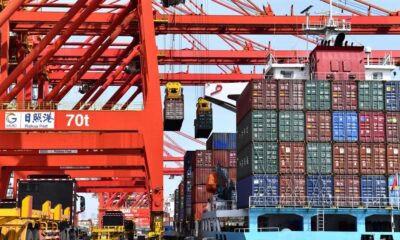
 Asia2 weeks ago
Asia2 weeks agoOECD forecasts slower Chinese economic growth due to trade war
-

 Asia2 weeks ago
Asia2 weeks agoLee Jae-myung inaugurated as South Korea’s new president, vows unity and economic revival
-

 America2 weeks ago
America2 weeks agoAI’s potential ‘white-collar massacre’ sparks debate on job future, says Amodei
-

 America2 weeks ago
America2 weeks agoPentagon to shift Greenland oversight to Northern Command
-

 Diplomacy3 days ago
Diplomacy3 days agoFormer diplomat warns forcing Iran out of the NPT is the greatest danger
-

 Europe2 weeks ago
Europe2 weeks agoVatican under Pope Leo XIV warns against AI ‘playing God,’ urges ethical development
-

 Europe2 weeks ago
Europe2 weeks agoMerz government plans €46 billion corporate tax cut for Germany








